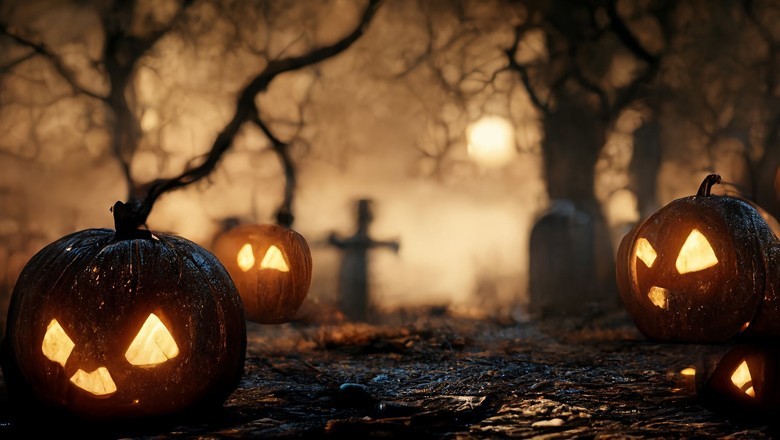What is Halloween? An ancient pagan festival celebrated worldwide today

Web Desk
|
31 Oct 2024
The Pagal Festival, which essentially originated in Ireland, has evolved into a large celebratory event across the world, with some people also celebrating it in Pakistan. But does the festival truly promote or cherish evil? How much truth is there in that notion? Let’s find out.
It's October 31, a day that begins like any other but quickly turns into a night shrouded in mystery and thrills.
As darkness falls, the air fills with an exhilarating chill, and the scene is set with eerie spider webs, haunting human skeletons, and menacing pumpkin faces. This is Halloween—a night, where the ordinary gives way to the extraordinary.
Anyone even slightly familiar with this festival might misunderstand the thrill and experience the shock of suddenly encountering a ghost, witch, or demon. However, this festival is now recognised globally.
Halloween is largely celebrated as a secular, non-religious festival, with people from different backgrounds around the world cherishing its festivities.
Nevertheless, without understanding the origins and purpose of the festival, one’s knowledge about it remains incomplete.
Halloween originated in Ireland and swiftly spread around the world thanks to Irish migrants. Upon its arrival in the US, the tradition modernised, the Irish carved scary faces from turnips, but in the US, pumpkins took their place.
The festival aims to help spirits separate themselves from demons, evolving from “Samhain” to “Halloween” during its journey from Ireland to the world.
Halloween was first formally celebrated in the American state of Minnesota in 1921, eventually becoming a significant festival worldwide.
According to some traditions, this festival has roots in Christianity and Samhain. Historically, Halloween was celebrated in the pre-Christian era particularly in Europe.
At that time, farmers in Ireland and France marked it as a "Harvest Festival." The ancient tribes believed that winter represented death for them, as most deaths occurred during that season.
These tribes beleived that the last night of October before the New Year, was a time when spirits could descend upon the earth with the intention of causing harm to their lives and property.
To appease the spirits, tribes would wear animal skin cloaks and horns lighting bonfires in the deep darkness of the night.
Different counties in the Ireland celebrate this festival in various ways.
In Meath County, Ireland, there is a place known as "The Hill of Ward," which is recognised as the birthplace of Halloween.
It is also the site of the Great Fire Festival, which begins on the eve of Samhain and welcomes winter in the presence of holy spirits.
Samhain celebrations are a captivating tradition, where the Celts honour the transition between worlds.
For over 2,000 years, they have ignited fires to illuminate the path for spirits returning from the underworld.
It is also said that spirits roam the earth on the night of Samhain, prompting the Celts to light fires to drive away the demons within these spirits.
Halloween and Samhain are celebrated simultaneously but in different ways; while the former embraces the demons on Earth, the latter distinguishes them from the spirits.












Comments
0 comment